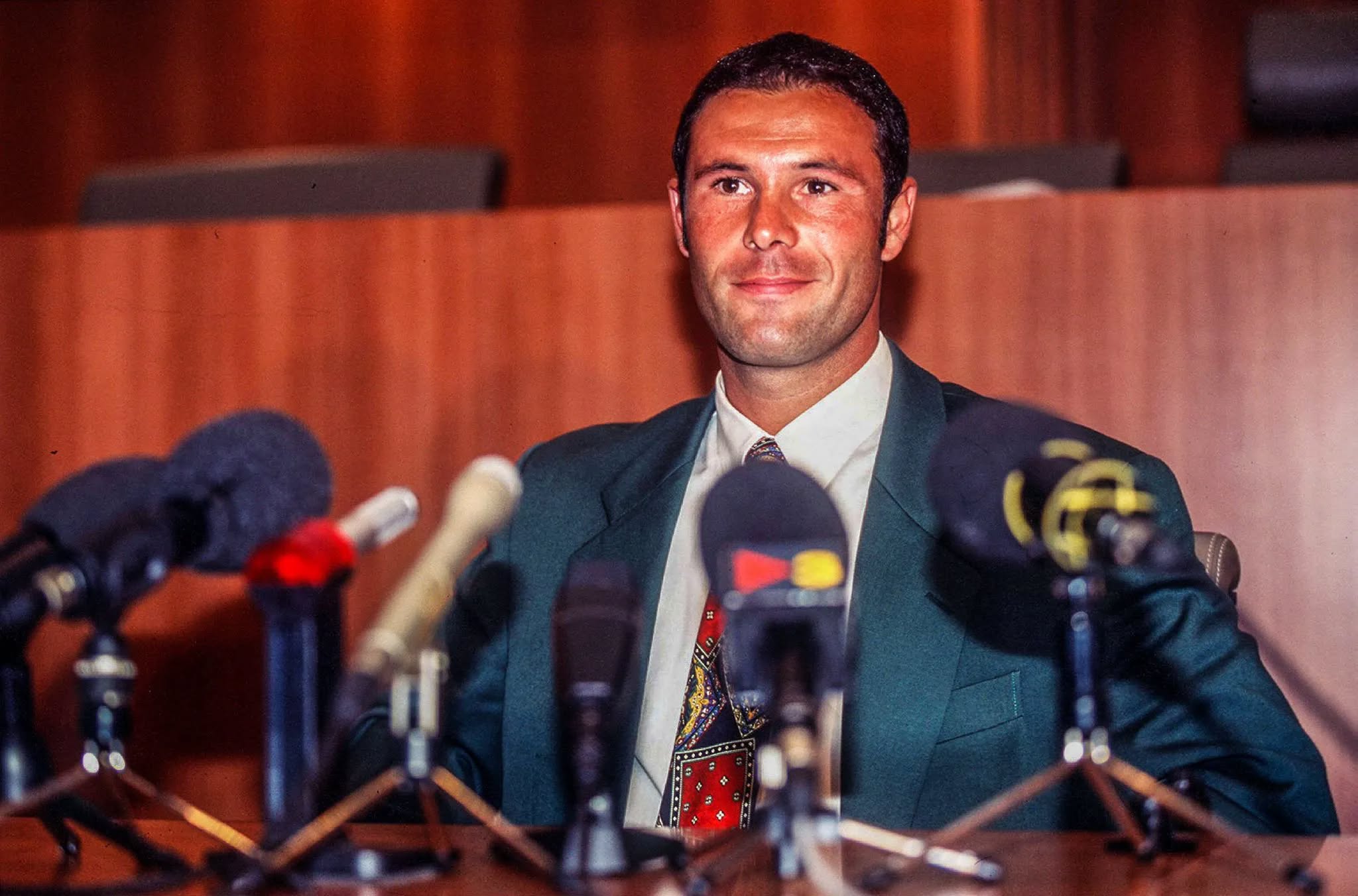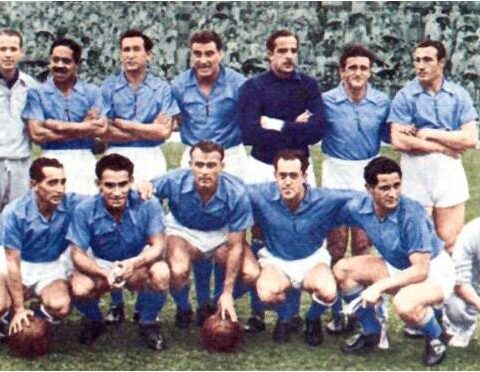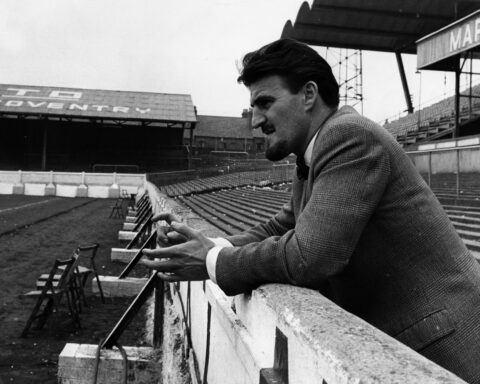(This article was originally written by Paul Cahill in January 2015)
January, goddam January. Back to work. Back to whatever grindstone or drudgery constitutes your daily existence.
Back to wondering if your team’s star-striker, or heroic goalkeeper is suddenly going to fuck-off somewhere for a bigger pay-day, or a more welcoming climate, or a better chance at glory.
It’s that time of year the fans, the clubs and the media love to hate. The January transfer window; a time for managers and chairmen to shore up defence lines and boost their fire-power, and flog-off irksome troublemakers or cash-in on overpriced but underpaid flavour of the month footballers.
While the transfer window does become wearisome, overhyped and downright ridiculous as the month progresses, ending with the dishevelled Sky reporters talking gibberish outside the club grounds of the big movers and shakers, there is also much enjoyment to be taken out of it.
Fans are often hopeful that a new signing will spark something in their team. There are profits to be had for shrewd smaller clubs who can hold bigger clubs, desperate to gain a champions league spot or to avoid relegation, to ransom.
The transfer window was proposed in English football initially in the early 1990s and was made compulsory world-wide by FIFA during the 2002–03 season.
There have been some spectacular moves since then, and prices have grown, expanded and exploded, and like the Universe itself, will continue to expand into the infinite, into the unknown, until something spectacularly drastic happens.
Andy Carroll cost Liverpool 35 million pounds. £37 million for Juan Mata is not too bad and £38 million for Sergio Aguero was a bargain. Torres and Luiz for £50 million, Kaka for £55 million, Suarez, Ronaldo and Bale for £75, £80 and £86 million respectively.
Mind boggling money really, but still just money. These transfers pale to insignificance compared to the most important transfer ever to happen in the game, a transfer that took place twenty years ago and cost nothing but a man’s career.
A transfer that has made all of the above transfers possible, one that changed the lives of footballers and gave rise to the astronomical sums currently paid out in fees and wages, a genuine game-changer.
If you happen to be a young whipper-snapper born after, say, 1990, you probably don’t know who Jean-Marc Bosman is. Bosman was a midfielder for Belgian Club de Liege in the early 1990s who wanted a move.
Easy-peasy you might think. Just have your agent tout you around a few clubs, make sure the coach knows in no uncertain terms about your complete lack of commitment, and Bob’s your uncle you’ll be shipped out for an acceptable price before your contract runs down and you can move away for free.
Wrong, because before Bosman inadvertently turned football economics on its head, it was the club and not the player who called the shots.
It’s crazy to think that just twenty years ago a footballer was not allowed to leave his club unless they agreed to let him go, even if his contract had run out!
Although it wasn’t the same in all countries, in the United Kingdom since 1981 a player had to stand before a tribunal at the end of his contract, which would decide on where he would be allowed to go and what fees if any were to be paid.
Bosman’s contract with his club ran out in 1990 and he wanted to move on to a team in France. However the Belgian club demanded a transfer fee that Dunkerque refused to pay so Liege refused to let him go.
The player was dropped completely from the first team, his wages were severely reduced, and he remained tied to the club.
Bosman went to the European Court of Justice and sued for “restraint of trade”. For five years he lumbered in a professional limbo until the courts ruled that the “system constituted a restriction on the free movement of workers” and was prohibited by Article 39(1) of the EC Treaty.
The foiled transfer of Jean-Marc Bosman from Club de Leige of Belgium to Dunkerque of France, neither clubs exactly power-houses of the European game, would change the face of Football like Picasso would change the faces of his subjects … drastically.
Firstly, the tables had been turned on the clubs and the player was now in charge of his own destiny.
Now the player called the shots. Kaaa-chingg! If a player didn’t like his employers he could now allow his contract to dwindle and leave to go to any club who wanted him, free of charge.
Players could now also benefit from huge signing-on bonuses due to the lack of a transfer fee. Kaaa-ching!
Because clubs were no longer able to keep their players chained to them indefinitely, footballers could demand bigger and longer contracts, with loyalty bonuses on top, or else threaten to leave for free when their existing contract runs out. Kaaa-ching!
Secondly, imagine your team with only three foreign players, keeping in mind Irish, Welsh and Scottish players also considered foreign for the purposes of European competition.
This was the case pre-Bosman, while now over 60% of the players in the Premier League are foreign.
With the restrictions lifted European players were free to move and work in any EU country they wanted, and UEFA was forbidden to force clubs to discriminate against players from another country.
While the ruling has led to teams such as Arsenal and Chelsea fielding teams consisting entirely of non-British players, it has also led to an influx of top-notch, world-class players that have brightened up our screens and infuriated our passions over the past twenty years, and still do today.
Finally, every silver lining has a cloud, and the Bosman ruling has inevitably been detrimental to the game in some ways too.
Agents now had a means to squeeze clubs for every penny they could, encouraging disloyalty in the pursuit of transfer-fee cuts and signing-on bonuses.
Smaller clubs who are struggling financially, or who had nurtured outstanding talent through their youth system, are now forced to sell their players for a fraction of what they could have pre-Bosman, for fear of losing them for nothing when their contract expires. And of course the fans had to suffer too.
Someone would have to foot the bill for the higher transfer fees and wages, and through ticket-pricing, aggressive merchandising, and clever media packaging that bill is footed by you and me, usually via the warm embrace of a fifty-inch plasma.
With all the talk of three hundred grand a week wages, one hundred and fifty million pound transfer fees, flash cars, crass houses and coked-up wags, one wonders if the modern footballer ever spares a thought for poor Jean-Marc Bosman, who had his career destroyed and today lives solely off the indemnities from his court victory? Nah, of course they don’t.













Follow Me